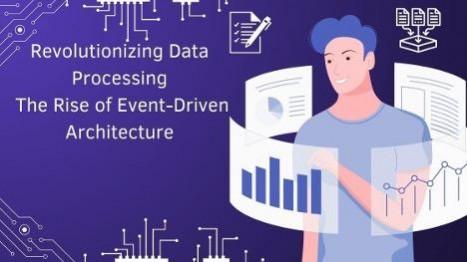
In an era where real-time data integration is crucial, technological advancements continue to reshape how information is processed and utilized. Siddharth Kumar Choudhary, a seasoned expert in cloud computing and system architecture, delves into the transformative potential of Event-Driven Architecture (EDA) in modern computing environments. His latest work highlights the role of EDA in enabling scalable, responsive, and efficient systems.
The Shift from Batch to Real-Time Processing
Traditional data processing methods relied heavily on batch-based operations involving periodic data collection and delayed processing. However, the demand for real-time insights has driven a paradigm shift toward event-driven systems. Unlike batch processing, which operates at scheduled intervals, EDA ensures immediate responsiveness by processing and acting on data events as they occur. This shift is particularly beneficial in e-commerce, financial services, and IoT applications, where instant decision-making is crucial.
Core Principles of Event-Driven Architecture
EDA operates on the fundamental principle of loose coupling, where independent components interact through event messages rather than direct dependencies. This architecture comprises three key components: event producers, brokers, and consumers. Producers generate events, brokers manage event distribution, and consumers process the events, ensuring seamless and efficient data flow across systems. The decoupled nature of EDA enhances system flexibility, allowing for seamless updates and integration of new services without disrupting existing workflows.
Enhanced Scalability and System Resilience
Event-Driven Architecture (EDA) dynamically scales with workload fluctuations, unlike monolithic systems that struggle with data surges. By distributing workloads across multiple nodes, EDA enhances resilience and prevents failures from impacting the entire system. Fault tolerance mechanisms like event replay ensure continuous operations. Studies show EDA improves reliability by 35%, reduces downtime by 50%, and boosts processing efficiency by 40%, enhancing real-time data handling.
Cloud-Native Event Processing Platforms
The widespread adoption of cloud computing has further propelled the evolution of event-driven architectures. Leading cloud service providers offer robust event-streaming platforms such as Apache Kafka, AWS Kinesis, and Google Cloud Pub/Sub. These platforms facilitate real-time data ingestion, processing, and analysis, enabling organizations to build scalable event-driven applications with minimal infrastructure overhead. Each platform has distinct capabilities, including automatic scaling, global event distribution, and built-in security features, allowing businesses to choose solutions tailored to their needs.
Modern Implementation Strategies
The implementation of EDA involves various architectural patterns that optimize data processing and system performance. Event sourcing, for instance, maintains a complete log of all state changes, enabling auditability and historical data reconstruction. The Command Query Responsibility Segregation (CQRS) pattern further enhances efficiency by separating data modification and retrieval operations. Additionally, microservices architectures leverage event-driven communication models, ensuring asynchronous interactions between distributed services.
Overcoming Technical Challenges
Despite its numerous advantages, EDA presents specific technical challenges, including data consistency, fault tolerance, and security. Addressing these challenges requires robust implementation strategies such as idempotency keys for duplicate event prevention, distributed snapshots for state recovery, and encryption techniques for secure event transmission. Additionally, monitoring and observability solutions are critical in maintaining system health by providing real-time insights into event flow and performance metrics.
The Future of Event-Driven Architecture
Looking ahead, integrating AI and ML with event-driven systems will revolutionize predictive analytics and automation. AI-driven event processors enable real-time anomaly detection, personalized recommendations, and intelligent automation. Additionally, edge computing enhances EDA by processing events closer to data sources, reducing latency, and improving responsiveness in applications like autonomous vehicles and industrial automation.
In conclusion, Siddharth Kumar Choudhary emphasizes Event-Driven Architecture as a transformative force in modern computing. By enabling real-time processing, scalability, and resilience, EDA is revolutionizing decision-making across industries. As adoption grows, it is set to become the backbone of next-generation systems, driving innovation, efficiency, and a new era of intelligent computing.

















